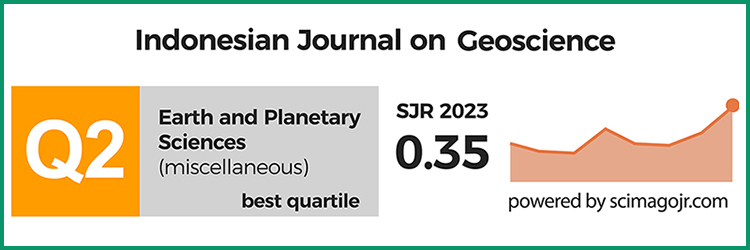Development of Soil Cohesion and Friction Angle Models Using Multiple Linear Regression (MLR) Statistical Techniques
DOI:
https://doi.org/10.17014/ijog.10.1.15-25Keywords:
Multiple linear regression, Soil strength, Significance level, Statistical analysisAbstract
The multiple linear regression (MLR) soil strength models developed from electrical resistivity tomography and seismic refraction tomography are presented in this paper. The multiple linear regression method was used to estimate two dependent values, namely soil cohesion and friction angle, based on the values of two independent variables, namely resistivity and velocity. These parameters were regressed using regression statistics to create a multiple linear regression model using SPSS software. At the first stage, the MLR model results were needed to be evaluated to avoid bias. In this stage, the MLR for both soil cohesion and friction angle were checked for the coefficient of multiple determination, significance level (p-value), and multicolinearity. The next is the second stage, where the accuracy assessment of the MLR models was validated using root mean squared error (RMSE) and mean absolute percentage error (MAPE) for the statistical analysis. Based on the results of these analyses, the newly soil strength models from the geophysical data set for the near-surface study were successfully created. The soil strength models developed using MLR are reliable for imaging the subsurface in two-dimensional form, covering a larger area than the traditional method rather than laboratory tests, especially a large number of samples for site investigation.
Downloads
Published
22-11-2022
How to Cite
Bery, A. A. (2022). Development of Soil Cohesion and Friction Angle Models Using Multiple Linear Regression (MLR) Statistical Techniques. Indonesian Journal on Geoscience, 10(1), 15–25. https://doi.org/10.17014/ijog.10.1.15-25
Issue
Section
Articles



















